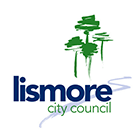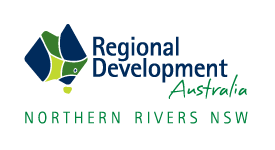 Statistical information about the Lismore region can be found in the RDA Northern Rivers Data Apps.
Statistical information about the Lismore region can be found in the RDA Northern Rivers Data Apps.
Greater Lismore covers an area of 1,267 square kilometres stretching from North Woodburn in the south, to the village of Nimbin and the Nightcap Ranges to the North, and from Clunes in the east, to Bentley in the West.
Lismore is situated on the banks of the Wilsons River and the busy Bruxner Highway, providing easy access to the Pacific Highway and other major transport links.
There are many great reasons to live and invest in Lismore.
Best of Both Worlds – City Convenience & Country Living
Lismore is a city that boasts the culture and convenience of a major regional centre and all of the lifestyle advantages of an extraordinarily beautiful natural environment. Founded on agriculture, Lismore’s farming community is still thriving in the rolling hills and beautiful villages that surround the City.
Population
In the 2021 census, Lismore Council area had a population of 44,334. This represents an increase of 2.8% over the previous census.
Lismore has a comparatively young population, with the median age being just 37 – the youngest median age in the region. Lismore’s population continues to grow at a sustainable level with the City’s residents maintaining the highest household income for the region.
The population of Lismore is expected to rise by 21.4% in the next 15 years to 53,680 people.
Recent population growth in the Lismore region is part of the phenomenon of population shift from Sydney and Melbourne for lifestyle reasons and to take advantage of the ambient climate and natural environment.
Coastal areas, such as Ballina and Byron Bay, are becoming less affordable with more people choosing to live “one step removed from the Coast”.
The Climate: The subtropical climate means Lismore enjoys warm and mild weather all year ‘round. Expect hot, languid summers, mild winter days with cool evenings, and lots of sunshine. Rainfall in the region is high, and green, lush vegetation abounds. Summers are characterised by warm nights and warm to hot days, and late afternoon rain is common. Autumn is generally warm with some rain showers. Winter brings cool nights with warm sunny days, while spring has cool-warm nights with warm, occasionally hot days. Rainfall in the region is relatively high – higher than in Sydney and Brisbane.
The region experiences most of its rainfall between December and May, but heavy rain can fall at any time of the year. The Wilsons River Levy Bank protects the city centre from flooding, up to a one in twenty year event.
Community & Cultural Diversity: Lismore is known as the “Rainbow Region” – a name which reflects the magical richness and extraordinary cultural diversity of the region, as well as its strong sense of community and its penchant for natural living. A strong centre for all things “organic” coupled with a diverse community residing together, make Lismore a very special and culturally great place to live.
Telecommunications: Lismore has fibre optic cable and advanced switching technology. It offers the same range of telecommunications amenities as any major metropolitan centre in Australia. Communications to the capital cities and into the national fibre optic trunks are provided via high-capacity transmission systems.
First Rate Education & Healthcare Services: Lismore is the health centre for the region and is home to the North Coast’s largest public hospital, two private hospitals, and is well serviced by a strong contingent of allied health professionals. Educational services are equally well provided for with a large number of quality private and public schools, pre-schools and TAFE college. Lismore also proudly hosts Southern Cross University, one of Australia’s leading regional universities, offering a world class education. It is also home to the North Coast Conservatorium.
Proximity to the Coast & Capitals: The NSW Far North Coast and its white sandy beaches of Byron Bay, Ballina and surrounds are a mere 30-40 minute drive away. You can find yourself in the bustling Gold Coast region (and its international airport) within an hour, and the nearest capital city, Brisbane, is little more than a two hour drive. Jump on a plane at Lismore Regional Airport, only five minutes from the CBD, and be in Sydney in just over an hour.
Thriving Retail Centre: With the largest retail shopping precinct in the Northern Rivers, Lismore is a shoppers’ paradise. With everything from chic boutique fashion and designer homewares, to organic produce and rare books, there are quirky speciality stores, sidewalk cafés and arcades full of surprises. The City also hosts large national retail chains.
Arts & Culture: For decades now, Lismore has attracted a high number of artists of all kinds. There are numerous galleries and exhibitions throughout the region, and music, dance and live theatre abound. The Northern Rivers Performing Arts (NORPA) company and the Northern Rivers Conservatorium are based in Lismore and are key players in nurturing our strong art and culture scene.
City of Sport: Long regarded as a City of Sport, Lismore boasts magnificent sports grounds and hosts numerous major sporting events throughout the year. There are dozens of playing fields, an abundance of cricket pitches, baseball field, a synthetic hockey arena, indoor basketball courts, gymnasiums, tennis courts, horse and greyhound tracks, and a popular speedway circuit. For families the difficult question is: “which sport do I choose?”
World Heritage Wonders: Lismore is on the doorstep of some of Australia’s most significant World Heritage-listed reserves, spectacular National Parks and State Forests. These natural treasures include Mt Warning National Park surrounding the caldera of the ancient volcano, the Border Ranges and Nightcap National Parks and the last eleven remnants of “The Big Scrub”, the vast rainforest which once blanketed much of the region.
Affordable Housing: At a time when housing is becoming more expensive than ever, it’s reassuring to know that Lismore has recently been identified as having some of the best value real estate in the country. From inner-city dwellings to small acreages, Lismore offers some of the best housing opportunities at an affordable price, particularly when compared to nearby coastal alternatives.
Employment Levels: Traditionally, unemployment in the Lismore Council Area has been well above the NSW rate. However, unemployment for Lismore over the last decade has fallen from a peak of 12.8 percent in 1998 to 6.4 percent for the March 2008 quarter. This represents a much higher proportion of our labour force now being utilised (the highest in over a decade), with expanding employment opportunities and a ready availability of local skilled labour. Whilst these figures may be a reflection of the buoyant economic conditions for Australia, the Lismore LGA as a regional area is expected to retain a higher rate of unemployment than the State average. This is partly because the rate of job growth in recent years has lagged behind the population expansion as ‘tree changers’ seek out the region’s renowned lifestyle.
Labour force: Lismore Council Area is part of a region experiencing business growth in Health Care, Education and industry sectors contributing to Tourism and Hospitality. Employment associated with Public Administration and Safety, plus Personal Services is also on the rise as these sectors expand their service delivery capacity.
Dominance by the Retail sector as the region’s main employer for many decades, gave way in 2006 to service delivery in Health Care and Social Assistances. Since the 2006 census, the ‘Employees by Industry’ chart reflects strong expansion in both the Heath and Education sectors as they continue to provide the chief employment in the region. These two sectors firmly underpin Lismore as the medical and educational centre for the region.
This unprecedented health sector expansion and the record number of patient treatments by the North Coast Area Health Service (NCAHS) are very strong indicators of our burgeoning health sector. In the year ending 2006, the NCAHS treated 10 percent more inpatients than in the previous year – providing the strongest indicator of our growing population.
Education is key to a thriving economy and the Lismore LGA is well served by quality providers offering primary, secondary and tertiary educational excellence. Southern Cross University and the North Coast Institute of TAFE are not only important employment providers, but their courses also underpin the upskilling of our local workforce and economy.
Two new industry categories were introduced in the 2006 Census – that of Administrative and Support Services, as well as Professional, Scientific and Technical Services. Whilst Construction and Manufacturing appear to have lost ground in employment numbers since the 2001 Census, it is thought that these jobs are still retained in the region, but have simply been recorded under the two new industry categories.
Traditional agricultural industries, such as timber and wood products, sugar, dairying and cattle, whilst under economic stress, remain important sources of wealth for the region. This wealth is being augmented by the so called ’sunrise’ industries including macadamias, coffee and tea tree. New opportunities for agricultural pursuits exist by value adding to the supply chain, creating new products and services.
Schools Galore: Lismore is well serviced by quality private and public schools, pre-schools and TAFE colleges, in addition to a Conservatorium of Music and a range of Adult Community Education programs. Lismore is also home to the main campus of Southern Cross University, one of Australia’s most progressive and contemporary Universities.
Housing Affordability: Changes in residential property prices are an indicator of confidence in the future of a region. Lismore’s property prices have risen at about the same rate as coastal areas, however Lismore’s property prices are significantly more affordable and increasingly attractive to commercial and industrial developments.
Council Commitment: To assist this growth, Lismore City Council is committed to the on-going development of the city’s infrastructure. Lismore City Council spends more than $30 million each year in maintaining, developing and upgrading the city’s infrastructure.
Educated Workforce: Lismore is home to the most educated workforce in the region and is also home to the main campus of Southern Cross University, one of Australia’s most progressive and contemporary Universities. Lismore’s workforce has the highest level of bachelor degree and post graduate qualified workers in the region. The City also enjoys the highest level of vocationally trained workers in the region – a testament to its strong manufacturing base.



